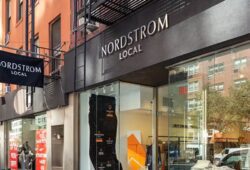-
Augmented reality (AR) technology integrates digital information with the physical environment, live and in real time.
-
In 2023, the number of potential mobile AR user devices is expected to reach 1.4 billion.
-
On a consumer level, the AR hardware market was valued at 2.4 billion U.S. dollars in 2023.
Augmented Reality (AR) has swiftly become a game-changer for brands looking to engage users in novel and interactive ways. Google’s ARCode Geospatial API is at the forefront of this revolution, enabling users to interact with virtual objects seamlessly within the real world through their mobile devices. These ARCodes are generated using a customized QR code format, containing information about the virtual object, such as its location, size, and shape. When users scan an ARCode with their mobile device, the code’s information is leveraged to overlay the virtual object onto the real world.
ARCodes can serve various purposes, including:
- Displaying Additional Information: ARCodes can provide supplementary information about an object. For instance, an ARCode might reveal a plant’s name, a building’s history, or product usage instructions.
- Offering Interactive Experiences: They can facilitate interactive experiences, allowing users to play games, watch videos, or learn about specific subjects.
- Enabling Purchases: ARCodes can streamline purchases, enabling users to buy products or services with a simple scan.
Google’s ARCode is a relatively new technology but has the potential to revolutionize how we interact with our surroundings.
Current Applications of Google’s ARCode
- Retail Sector: In retail, ARCode is being employed to provide additional product information, offer interactive experiences, and facilitate purchases. For instance, Walmart uses ARCode to enable users to visualize furniture in their homes before making a purchase.
Here’s another example of how Augmented Reality (AR) is pushing the boundaries of creativity and engagement. In the heart of New York City’s iconic Times Square, a unique celebration unfolded with the Gap x Barbie clothing collection. Google, in collaboration with Adobe Aero and Unit9, orchestrated a virtual storefront, effectively transforming Times Square into a vibrant pink Pop-Up Store.
WELCOME TO GAP X BARBIE?
We’re transforming our iconic Times Square store into an immersive Gap X Barbie AR experience where you can sneak peek the collab that’s dropping later this month. ??Experience powered by @Google Geospatial Creator in @Adobe Aero. // @Barbie pic.twitter.com/PCGDd8BvS0— Gap (@Gap) May 11, 2023
- Music Industry: The world’s most famous virtual band, Gorillaz, performed “Skinny Ape” from New York’s Times Square using Augmented Reality through an app. Over three million users remotely watched the video, and 50 thousand fans downloaded the app in the first week.
- Education Sector: In education, AR is enhancing interactive and engaging learning experiences. Google Earth Education, for example, uses ARCode to allow students to explore virtual world locations.
- Gaming Industry: Celebrating the 45th anniversary of the legendary “Space Invaders World Defense“, an extraordinary digitalization of New York City occurred. The city became overrun by invading spaceships, bringing the beloved game to life like never before. What’s even more impressive is that this immersive experience is accessible through Street View in over 100 countries.
- Tourism Sector: In tourism, AR provides visitors with information about attractions and points of interest. London, for instance, utilizes AR to enable visitors to delve into the city’s history and culture.
Google’s ARCode is a rapidly growing technology with immense potential. As it continues to evolve, we can expect to see more ARCode applications integrated into our daily lives.
Brands that embrace Augmented Reality are not only enhancing user engagement but also creating immersive and memorable experiences for their audiences. AR is no longer science fiction; it’s the present and future of brand interaction.








